Conceived as one of the major structures on the Prussian Eastern Railway, the Old Wisla Bridge at Tczew originally consisted of six wrought iron spans. Due to Germany's invasion of Poland at the beginning World War II in 1939, only three original spans remain today. These remaining spans represent a unique technical monument of civil engineering achievements in the mid-nineteenth century.
Railway

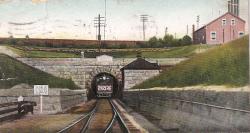
A Day's Pay According to tunnel records, the following pay rates were established for the 600-700 laborers required for this project:
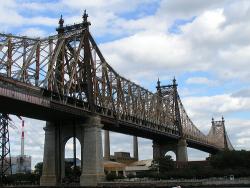
When opened in 1909, the Queensboro Bridge had the two longest steel cantilever spans in the world - 1,182 feet from Manhattan to Blackwell's Island and 984 feet from Blackwell's Island to Queens. These would remain the world's longest cantilever spans until the completion of the Quebec Bridge in 1917. The Queensboro Bridge has an overall length of 3,724.5 feet. It originally carried two elevated railway lines, two trolley lines, six carriage lanes and two pedestrian walkways.
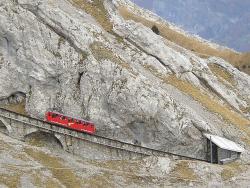
605 Alpnach State: Zip: Country: Switzerland Website: https://www.asme.org/about-asme/who-we-are/engineering-history/landmarks/220-pilatusbahn, https://www.asme.org/getmedia/8c4b369d-83fd-4b9e-9248-b6d78b28628c/220-Pilatusbahn-1882.aspx Creator: Locher, Eduard , Locher Systems
The Pilatusbahn—the steepest rack railway in the world—has operated successfully since its opening in 1889 over a route of 4.62 kilometers (2.87 miles) between Alpnachstad on Lake Lucerne and Pilatus Kulm, rising 6,791 feet (2,070 meters) above sea level. This results in a gradient of 48%, or a rise of nearly one meter in two meters of run on the steepest sections of the line, which amounts to about a quarter of its length.
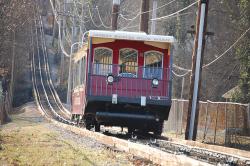
At the mountain where the Civil War's Battle Above the Clouds was waged, tourist business has thrived from the building of its first toll road (Whiteside Pike) in 1857 to present day.
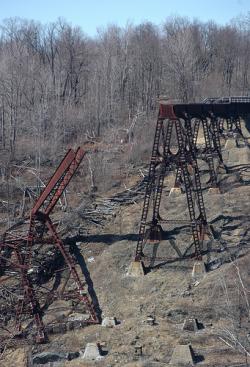
The workforce consisted of less than 100 men, yet they finished construction in just 94 days. Such speed was possible due to the elimination of scaffolding. Instead, iron rods were used to support construction of the trusses between the towers, and workers moved back and forth across the rods. A dangerous venture, yet no workers were seriously injured.

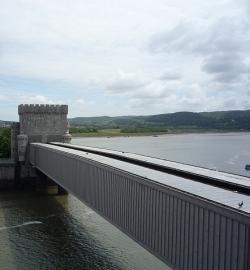
Built by Robert Stephenson to carry the Chester and Holyhead Railway across the River Conwy, this bridge was erected between 1846 and 1848. It consists of a single span 400 feet long, formed by two parallel rectangular wrought iron tubes, each weighing 1300 tons. Masonry towers were built on the abutments and topped with battlements and turrets to harmonize with the nearby Conwy Castle. The Conwy Tubular Bridge was the first railway bridge in which trains ran through the main girders. It represents a pioneering use of wrought iron for bridges.

The North Island Main Trunk Railway permitted overland travel and development of the New Zealand hinterland. Built under challenging conditions and over difficult terrain, all cuts, fills, and tunneling were minimized by careful use of the topography and by innovative engineering.
Over 30 miles south of Taumarunui, the North Island Main Trunk Railway climbs 2,086 feet to the edge of the great Waimarino Plateau. But over the last seven miles, an abrupt increase in altitude of over 700 feet posed an engineering challenge that led to the design of the famed Raurimu Spiral.
Innovations

The North Island Main Trunk Railway permitted overland travel and development of the New Zealand hinterland. Built under challenging conditions and over difficult terrain, all cuts, fills, and tunneling were minimized by careful use of the topography and by innovative engineering.
Over…
Read More
Built by Robert Stephenson to carry the Chester and Holyhead Railway across the River Conwy, this bridge was erected between 1846 and 1848. It consists of a single span 400 feet long, formed by two parallel rectangular wrought iron tubes, each weighing 1300 tons. Masonry towers were built on the…
Read More

The workforce consisted of less than 100 men, yet they finished construction in just 94 days. Such speed was possible due to the elimination of scaffolding. Instead, iron rods were used to support construction of the trusses between the towers, and workers moved back and forth across the rods. A…
Read More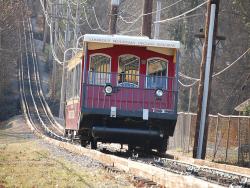
At the mountain where the Civil War's Battle Above the Clouds was waged, tourist business has thrived from the building of its first toll road (Whiteside Pike) in 1857 to present day.
More than 75,000 tourists a year were visiting the site when the war interceded. Tourism was not…
Read More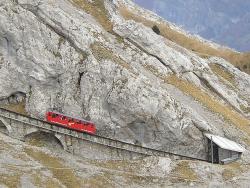
The Pilatusbahn—the steepest rack railway in the world—has operated successfully since its opening in 1889 over a route of 4.62 kilometers (2.87 miles) between Alpnachstad on Lake Lucerne and Pilatus Kulm, rising 6,791 feet (2,070 meters) above sea level. This results in a gradient of 48%, or a…
Read More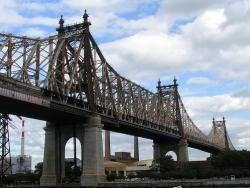
When opened in 1909, the Queensboro Bridge had the two longest steel cantilever spans in the world - 1,182 feet from Manhattan to Blackwell's Island and 984 feet from Blackwell's Island to Queens. These would remain the world's longest cantilever spans until the completion of the Quebec Bridge…
Read More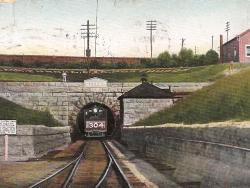
A Day's Pay According to tunnel records, the following pay rates were established for the 600-700 laborers required for this project:
- 17.5 cents per hour for diggers
- 15 cents per hour for erectors
- 12.5 cents per hour for others
- One additional…
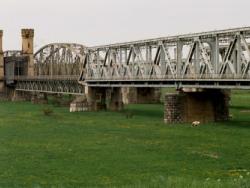
Conceived as one of the major structures on the Prussian Eastern Railway, the Old Wisla Bridge at Tczew originally consisted of six wrought iron spans. Due to Germany's invasion of Poland at the beginning World War II in 1939, only three original spans remain today. These remaining spans…
Read More

